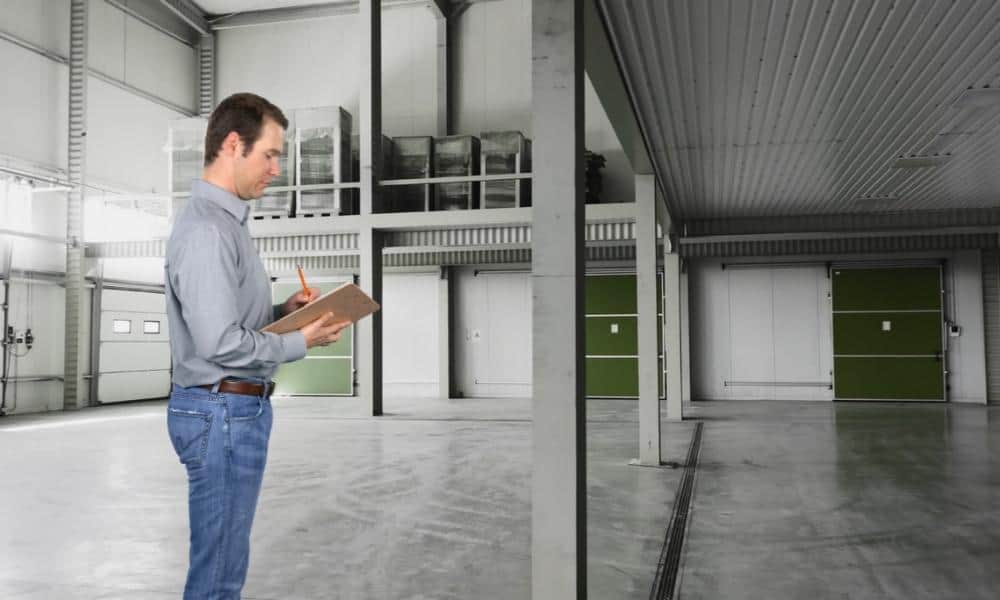How to Bid a Commercial Paint Job: 4 Steps for Estimating
Win more projects

It’s no secret that bidding on commercial painting jobs requires more detail and planning than typical residential painting jobs.
If you want to know how to bid on commercial painting jobs, look no further.
Commercial painting projects are large scale requiring a lot of staff and effort. They also use different materials like pressure washers, sandblasters, scaffolding, and aerial lifts.
Follow these four steps, and your ability to bid on commercial painting jobs will improve immensely, and you’ll soon be invoicing for larger paint jobs than you thought possible.
Four steps to bid on commercial paint jobs:
Step 1: Figure Out The Size Of The Area
Determining the total size of the area you will be painting will require simple calculations. The square footage of an area is calculated by multiplying the height of the wall by its length. This is done for each wall that will be painted in the commercial building.
This also includes calculating the areas of all windows and doors that must be painted. If none will be painted, add the areas and subtract them from the total square footage.
A big bonus of commercial painting contracts is your ability to take advantage of economies of scale due to the large amounts of unrestricted space.
Step 2: Determine The Overall Cost For Paint & Materials
Ensure you have the right amount of paint and materials to deliver a successful paint job to your client. With commercial painting, the risk is even higher – running out of paint or materials towards the end of a project could cost you thousands of dollars that aren’t covered by your original painting proposal!
On smooth surfaces, a gallon of paint will usually cover around 400 square feet of surface area and 300 square feet on a textured surface.
A gallon of paint is typically between $35 and $100. Divide the total square footage by 400 or 300 (depending on the surface type), then multiply that number by the cost of the paint per gallon.
Remember that commercial and industrial-grade paints, primers, and specialty coatings cost more.
Step 3: Calculate The Cost Of Labor
Commercial painting consists of large buildings such as retail stores, hotels, and other businesses. As a result, the labor cost will need to include the more extensive staff and crew used.
When dealing with a bigger number of employees, you may want to include experience, skill level, and hourly rates to determine labor costs. Depending on your own crew’s skills, you may need to consider hiring subcontractors.
Along with the overall labor cost, be sure to add in costs for any marketing that you may have invested to get your name out to your client!
Step 4: Adding It All Together
Now that you’ve got all you need to create an accurate bid for your commercial painting job, add it all together!
Cost of materials & paint + cost of labor + profit markup = Total commercial painting estimate
As you would do with any painting project, include your total markup in the end to generate a profit for all of the hard work you and your crew will put in.
Bonus Tip: If this is your first time giving a commercial estimate or you want to impress this specific client, throw in a freebie that doesn’t eat into your profits too much. Painting an office room for free or the handrails at an apartment complex may be a small fraction of a job, but it can go a long way.
Frequently Asked Questions
What is a commercial paint job?
A commercial paint job is a painting project performed on a commercial property such as a warehouse, office building, or facility.
Is commercial painting more expensive than residential painting?
Commercial painting is more expensive than residential painting because commercial spaces require industrial-grade paints, primers, and specialty coatings that can better handle wear and tear.
Conclusion
Once you have all of the tools needed to calculate an accurate price, bidding on commercial painting jobs can be pretty easy!
Remain flexible, as these costs may change when you include other factors. Incorporate cushion room in your estimate for these changes and any unexpected expenses that may come your way during your project.

Leave a Reply